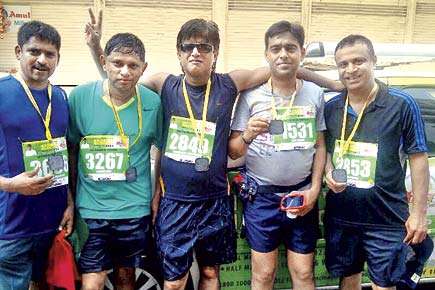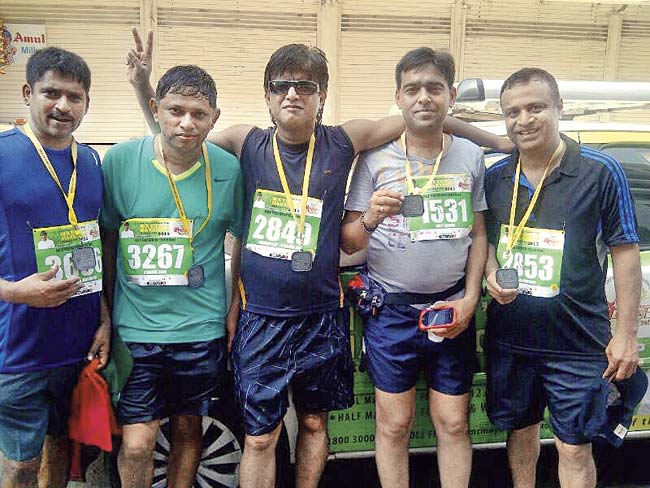Doctors said the 38-year-old’s condition is critical as his kidneys have been affected; the other two, who are admitted to the ICU of Bombay hospital, are slowly improving with one of them set to be discharged today

Of the three who collapsed during Sunday’s marathon and were admitted to the Intensive Care Unit at Bombay Hospital, one will now have to undergo dialysis as his kidneys have been affected severely. Ashok Kowale, the 38-year-old photographer, who was covering the event, collapsed after he sustained a severe cardiac arrest and was admitted to Bombay Hospital. Doctors say his condition is the worst among the three.
ADVERTISEMENT

Amit Kasat (fourth from left) is still recuperating in hospital after he collapsed a kilometre away from the finish line during the half-marathon
And while Kowale continues to battle, Amit Kasat, the senior executive at Standard Chartered Bank, is still in an unconscious state at the hospital. Kasat was rushed to hospital after he sustained a heart attack a kilometre away from the finish line of the half-marathon. Doctors said his condition is still critical and he is under observation.
Dr BK Goyal, head of the cardiology department at the hospital, said Kowale’s condition was the worst among the three patients who were admitted to the ICU. “Atul Singh, the 40-year-old top executive with Merrill Lynch, had been transferred out of the ICU on Tuesday after he underwent treatment for severe hydration.
His angiography results were normal and his brain is also functioning normally now,” said Dr Goyal, adding that Singh would be discharged today. Dr Goyal added that the strain of running had affected Kowale’s kidneys and that he would begin his dialysis sessions from today.
Dr Goyal, elaborating on Kasat’s condition, said that Kasat not requiring any support to maintain his blood pressure was a positive sign but they would only be able to determine if there is any brain damage to both Kowale and Kasat after they regained consciousness, which could take a few more days. Meanwhile, the patients’ respective companies are footing their extensive medical bills.
 Subscribe today by clicking the link and stay updated with the latest news!" Click here!
Subscribe today by clicking the link and stay updated with the latest news!" Click here!






